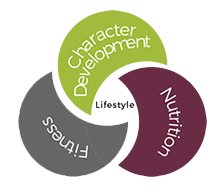Her Sports + Fitness During heavy training for a marathon or triathlon, you, like many athletes, may feel hungry from the moment you wake up until your head hits the pillow at night. Worse, with a jam-packed schedule, those pesky hunger pangs can lure you to stray from your carefully thought-out nutrition planand toward huge meals and unhealthy snacks.
So how do you reconcile the needs of your highly charged metabolism with your commitment to a healthy diet? The answer, it seems, may lie within one word: satiety.
Doctors and health scientists use the term satiety to refer to that feeling of satisfaction, or lack of hunger, which every person needs to sustain healthy eating habits. Let’s face it: “If you’re not craving food and feeling deprived, it’s a heck of a lot easier to stay with your eating plan,” says nutrition expert Jonny Bowden, Ph.D., C.N.S.
The concept of satiety has received a lot of attention lately, thanks to research demonstrating that very few people have the willpower to sustain a diet that leaves them feeling hungry most of the time. Barbara Rolls, Ph.D., a nutritionist at Penn State University, has even called satiety “the missing ingredient in weight management.” Fortunately, there are simple eating strategies that–despite your heavy training volume–allow you to keep your hunger in check, get the calories you need and perhaps shed a few extra pounds along the way.
HOW SATIETY WORKS
The presence of CCK and other feel-full proteins in the stomach initiates a number of actions. First, they close the valve leading from the stomach into the intestine, slowing the digestion of food. Then they travel to the brain, where they attach to specialized receptors. This action tells us to stop eating, and more importantly, causes the extended feeling of fullness.
FLIP YOUR HUNGER SWITCH
Your appetizers should contain just enough calories (50 to 100) to stimulate your feel-full proteins. They should also contain the nutrients known to be the most powerful satiety activators. “Research has shown that certain key nutrients are especially potent CCK activators,” says Steven Peikin, M.D., professor of medicine at the Robert Wood Johnson Medical School in Camden, New Jersey.
High concentrations of the most effective craving killers are found in olive oil, macadamia nut oil, flaxseed oil, almond oil, peanut oil and other healthy cold-pressed oils. Consuming a small amount of foods rich in these oils will activate your appetite-control switch before you begin eating a meal. Other effective hunger squashers include soy and dairy proteins.
Soups work especially well as light, filling appetizers. Thanks to their liquid form, broths take up a lot of space in the stomach, acting as a feel-full protein activator. In one study by Rolls, participants who ate a bowl of soup before a lunch entrée consumed 20 percent fewer total calories than participants who skipped the soup and just had the entrée.
Try consuming any of these healthy appetizers before a meal, and take advantage of the resulting fullness by serving yourself smaller portions than you normally do. Don’t worry, you won’t go hungry!
HUNGER-BUSTING APPETIZERS
- Three whole-wheat crackers with low-fat cheddar cheese
- Small spinach salad with olive-oil dressing
- Three celery or carrot sticks dipped in peanut butter
- Small bowl of miso soup
- 8 ounces of nonfat yogurt
- 1/3 cup edamame (steamed soybeans)
SMART SUBSTITUTIONS
Replace a non-vegetable food with a vegetable, or increase a vegetable portion.
Example: Substitute a grilled chicken sandwich with a chicken-salad wrap (less bread and meat, more lettuce) and save about 60 calories.
Replace a non-fruit food with a fruit, or increase a fruit portion.
Example: Substitute an 8-ounce serving of yogurt with a bowl of berries (1⁄2 cup) drizzled with vanilla yogurt and save about 140 calories.
Replace a high-calorie beverage with a low-calorie beverage.
Example: Replace a Starbucks Venti latte with a mug of coffee with half-and-half and sugar and save 250 calories.
Replace a fried food with a non-fried food.
Example: Substitute breaded, fried chicken strips with grilled chicken strips and save about 140 calories.
Replace a high-fat meat with a lean meat.
Example: Substitute an 85 percent lean ground-beef hamburger patty with a 95 percent lean ground-beef hamburger patty and save about 60 calories.
Replace a high-calorie sauce, condiment or topping with a low-calorie alternative.
Example: Substitute a tablespoon of regular mayonnaise with a tablespoon of reduced-fat mayonnaise and save 70 calories.
Replace a refined grain with a whole grain.
Example: Substitute a cup of cooked regular spaghetti with a cup of cooked whole-wheat pasta and save about 45 calories.
Replace a whole-milk dairy food with a reduced-fat dairy food.
Example: Substitute a half-cup of whole milk with a half-cup of skim milk in your breakfast cereal and save about 30 calories.
Replace a high-calorie dessert with a low-calorie dessert.
Example: Substitute a small bowl (1⁄2 cup) of ice cream with a large serving (1 cup) of mixed berries with a heaping tablespoon of low-fat vanilla yogurt drizzled on top and save about 70 calories.
Replace a non-organic food with an organic food.
Example: Substitute a serving of non-organic Stagg Vegetable Garden Four-Bean Chili with a serving of Walnut Acres Organic Chili and save 60



